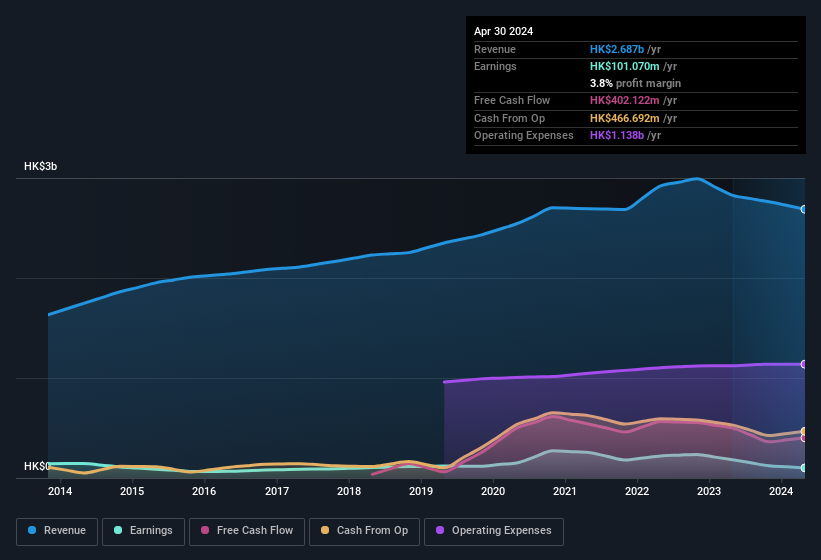
The market for International Housewares Retail Company Limited's (HKG:1373) shares didn't move much after it posted weak earnings recently. We think that the softer headline numbers might be getting counterbalanced by some positive underlying factors.
See our latest analysis for International Housewares Retail

Zooming In On International Housewares Retail's Earnings
One key financial ratio used to measure how well a company converts its profit to free cash flow (FCF) is the accrual ratio. The accrual ratio subtracts the FCF from the profit for a given period, and divides the result by the average operating assets of the company over that time. The ratio shows us how much a company's profit exceeds its FCF.
As a result, a negative accrual ratio is a positive for the company, and a positive accrual ratio is a negative. That is not intended to imply we should worry about a positive accrual ratio, but it's worth noting where the accrual ratio is rather high. Notably, there is some academic evidence that suggests that a high accrual ratio is a bad sign for near-term profits, generally speaking.
For the year to April 2024, International Housewares Retail had an accrual ratio of -0.64. Therefore, its statutory earnings were very significantly less than its free cashflow. In fact, it had free cash flow of HK$402m in the last year, which was a lot more than its statutory profit of HK$101.1m. International Housewares Retail's free cash flow actually declined over the last year, which is disappointing, like non-biodegradable balloons.
Note: we always recommend investors check balance sheet strength. Click here to be taken to our balance sheet analysis of International Housewares Retail.
Our Take On International Housewares Retail's Profit Performance
As we discussed above, International Housewares Retail's accrual ratio indicates strong conversion of profit to free cash flow, which is a positive for the company. Because of this, we think International Housewares Retail's underlying earnings potential is as good as, or possibly even better, than the statutory profit makes it seem! On the other hand, its EPS actually shrunk in the last twelve months. The goal of this article has been to assess how well we can rely on the statutory earnings to reflect the company's potential, but there is plenty more to consider. If you'd like to know more about International Housewares Retail as a business, it's important to be aware of any risks it's facing. Be aware that International Housewares Retail is showing 3 warning signs in our investment analysis and 1 of those can't be ignored...
This note has only looked at a single factor that sheds light on the nature of International Housewares Retail's profit. But there are plenty of other ways to inform your opinion of a company. For example, many people consider a high return on equity as an indication of favorable business economics, while others like to 'follow the money' and search out stocks that insiders are buying. While it might take a little research on your behalf, you may find this free collection of companies boasting high return on equity, or this list of stocks with significant insider holdings to be useful.
Have feedback on this article? Concerned about the content? Get in touch with us directly. Alternatively, email editorial-team (at) simplywallst.com.
This article by Simply Wall St is general in nature. We provide commentary based on historical data and analyst forecasts only using an unbiased methodology and our articles are not intended to be financial advice. It does not constitute a recommendation to buy or sell any stock, and does not take account of your objectives, or your financial situation. We aim to bring you long-term focused analysis driven by fundamental data. Note that our analysis may not factor in the latest price-sensitive company announcements or qualitative material. Simply Wall St has no position in any stocks mentioned.